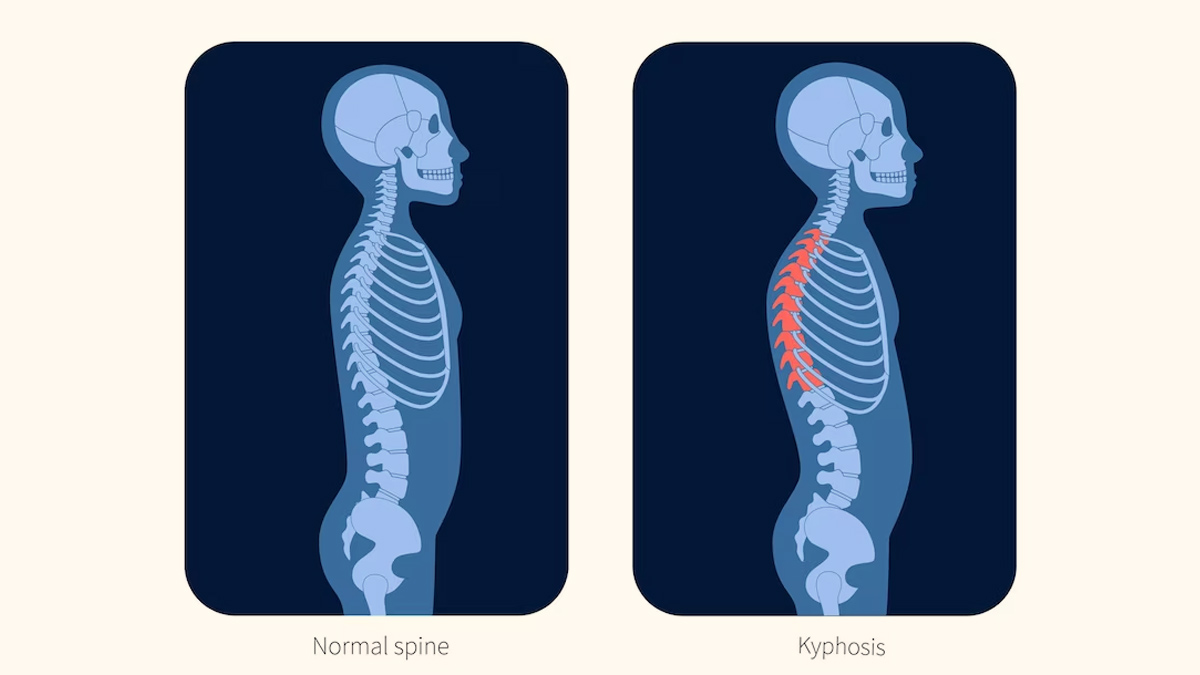
Ever feel that stabbing twinge or mild ache in your back when you bend to pick something up, lace your shoes, or even just bend over the sink? You're not alone. Back pain when bending is a very normal complaint that can be anything from a mild annoyance to a disabling problem. But why does this very simple movement cause such pain, and more importantly, what can you do to stop it?
Table of Content:-
According to experts, knowing and then doing something about the mechanics of your back is the key to relief. Your back is a sophisticated system of bones (vertebrae), discs (spacers between vertebrae), ligaments, muscles, and nerves. When you bend, these all work together. But if or when one or more of them isn't working at its best, pain can quickly develop. In an exclusive interaction with the editorial team of Onlymyhealth, Dr Bhumesh Tyagi, Consultant, General Medicine and Physician, Shardacare, Health City, Noida explained why this happen and ways to fix it. Here is what he shared with us.
Causes of Hurting Back When You Bend
A number of reasons can cause back pain when bending. Here are some of the most common culprits:
1. Muscle Strain or Sprain
This is possibly the most frequent cause, according to Dr Tyagi. Overstretching or rupturing of the muscles or ligaments that support your spine may happen during sudden, unbalanced movement, lifting something too heavy in an improper way, or even chronic poor posture. When you bend, these damaged tissues get stretched out and cause pain.

Also Read: A Gastroenterologist Shares 7 Habits To Break For Your Gut Health
2. Disc Issues
- Bulging or Herniated Disc: Intervertebral discs are shock absorbers. Over time, wear and tear, or from a sudden trauma, the soft inner substance of a disc may bulge outwards or even tear out through the harder outer casing. When you flex, this may compress adjacent nerves, leading to pain, numbness, or tingling.
- Degenerative Disc Disease: Discs degenerate with age and lose their hydration and elasticity, becoming damaged in structure. Flexion can further compress the degenerated discs, causing pain.
3. Poor Body Mechanics and Posture
Sitting or standing with poor posture, slouching chronically, or rounding your back when lifting can cause abnormal stress to your spine and the soft tissues around it. When you subsequently attempt to bend, your back is already in an already compromised position, so it's easier to injure.
4. Sciatica
This describes pain that shoots along the course of the sciatic nerve, branching from your lower back down into your hips and legs. Usually brought on by a bulging disc or spinal stenosis (narrowing of the spinal canal) compressing the nerve, bending aggravates sciatic pain.
5. Facet Joint Dysfunction
Facet joints are tiny joints at the rear of your vertebrae that permit motion of the spine. When these joints flare up or are arthritic, bending may be painful because of compression or irritation.

Also Read: It's Stone Fruits Season In The US: Here's Why They Are Good For You
5. Muscle Imbalances and Weak Core
Abdominal and gluteal weakness can cause additional pressure on your lower back. When bending, your core muscles are responsible for stabilising your spine. If they're not strong, your back muscles need to overdo the work, which causes fatigue and pain.
How to Correct Back Pain When Bending
The good news is that the majority of instances of back pain when bending can be treated and alleviated with conservative therapies and lifestyle modifications. Here is how to begin finding relief:
- Practice Proper Body Mechanics: This might be the most important step.
- Lift with Your Legs: Bending at the hips and knees when lifting something and keeping your back straight. Use your strong leg muscles, not your back.
- Hinge at Your Hips: To lean forward for activities such as washing dishes or brushing teeth, try to hinge at your hips instead of rounding your lower back.
- Don't Twist When You Bend: Bending and twisting together is a formula for disaster. Turn the object you are dealing with directly in front of you.
- Strengthen Your Glutes and Core: A stable core is a natural support for your spine. Add exercises such as planks, bird-dog, and glute bridges to your exercise routine. Take advice from a fitness expert if necessary.
- Improve Flexibility: Tight hamstrings and hip flexors can pull on your pelvis and lower back, contributing to pain. Gentle stretching for these areas can be beneficial. Yoga and Pilates are excellent for improving overall flexibility and strength.
- Mind Your Posture: Be conscious of your posture throughout the day, whether sitting, standing, or walking. Ensure your ears, shoulders, and hips are aligned. Use ergonomic chairs and standing desks if possible.
- Listen to Your Body and Rest: If any movement hurts, stop. Allow your back time to recover. Brief rest is okay, but extended bed rest is usually not advisable.
- Apply Heat or Cold: Ice packs are used for acute pain to reduce inflammation. Heat packs are applied for chronic stiffness to relax muscles and increase blood flow.
- Consider Professional Help: If your back pain is persistent, severe, or accompanied by numbness, tingling, weakness, or bowel/bladder changes, it's crucial to seek medical attention.
- Physiotherapist/Physical Therapist: They can diagnose the root cause of your pain and develop a personalised exercise and rehabilitation program.
- Maintain a Healthy Weight: Being overweight, particularly around the abdomen, places added pressure on your lower back.
Remember that prevention is key! Once you've gained relief, work on avoiding future attacks. Exercise regularly, stay at a healthy weight, use good posture, and watch out for your body mechanics as your best defenses against the bending blues.
Don't let back pain while bending restrict your life. By knowing the reasons and taking the proactive measures, you can take charge again, move around freely, and live a pain-free life.
Also watch this video
How we keep this article up to date:
We work with experts and keep a close eye on the latest in health and wellness. Whenever there is a new research or helpful information, we update our articles with accurate and useful advice.
Current Version